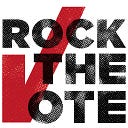Electoral College Certification: An Explainer
States counts were certified in November and December in accordance with each state’s laws. On December 14, 2020, electors comprising the electoral college assembled in each state to cast votes and mail the votes to Congress.
On January 3, 2021, the 117th Congress was sworn into office, including newly elected candidates who won in the 2020 General Election and subsequent runoff elections.
On January 6, 2021 at 1PM ET, members of The U.S. House of Representatives (House) and of The U.S. Senate (Senate), collectively known as Congress, will meet in the House chamber for a joint session to certify the Electoral College votes from all 50 states. Sitting Vice President Mike Pence will preside over the joint session in his role as President of the Senate, which for this process is like “a ceremonial host”.
Two wooden boxes containing the states’ certified results will be brought to the chamber and Congress will open and formally count the electoral college votes from each state.
There are a total 538 electoral votes in the electoral college. Law requires the winner receive 270 or more electoral votes to become the next President. With state results certified, President-Elect Joe Biden won 306 electoral votes and President Trump won 232.
Typically, the process of Congress opening and counting state’s electoral votes is a formality and takes less than a half hour.
Why is this process more relevant in 2021 than in prior elections?
Several Republican members of Congress have stated their intention to object to results from states where President-Elect Biden won, but where President Trump and his supporters have, without evidence, questioned results.
A member of Congress may object if they question the legitimacy of the results from a state. An objection must have the support of at least one Representative and one Senator; otherwise, the objection is thrown out. If an objection has the support of at least one Representative and one Senator, the Joint Session of Congress is temporarily suspended and the House and Senate go to their own chambers where they vote on the objection.
In their own chambers, the House and Senate have up to two hours to debate and vote on the objection. Members have up to five minutes to speak for or against the objection. Each chamber votes independently.
For an objection to be upheld, both the House and the Senate need to vote in favor of the objection by simple majority. If an objection is upheld, the state’s votes are not counted. If the House and Senate split in their vote or if both chambers vote to reject the objection, the state’s electoral votes are counted and the joint session continues.
While there may be Republican objections, Democrats hold the majority in the House of Representatives, which will almost certainly not vote in favor of the objections, thereby allowing votes to be counted.
Because of the objection procedures, this could be a much lengthier process than in past elections. It’s likely Republican House members will object to state results; however, it will only trigger the more time-consuming chamber votes if one Senator endorses the objection. The question will be if any Senators risk endorsing an objection that is almost certain to fail.
